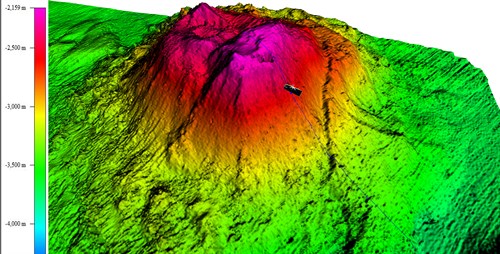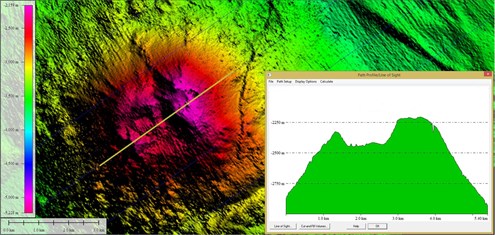Chinese Vessel Joining MH370 Search
China is set to join the underwater search for a Malaysia Airlines passenger jet missing for almost two years by providing a sonar-equipped vessel by the end of February, Australia's deputy prime minister Warren Truss said on Friday.
Malaysia Airlines Flight MH370 disappeared with 239 people on board during a flight from Kuala Lumpur to Beijing in March 2014, sparking one of the greatest mysteries in aviation history.
The 117m (383-foot) Chinese search and rescue vessel Dong Hai Jiu 101 was offered to Prime Minister Malcolm Turnbull in November and will be deployed to join search operations in the southern Indian Ocean, where the plane is believed to have gone down in March 2014.
At the time, China valued its contribution to the search at A$20 million ($14.2 million).
The Australian-led underwater search is one of the most expensive ever conducted. An initial hunt along a rugged 60,000 square kilometers (23,000 square miles) patch of sea floor off the coast of Perth cost A$120 million but yielded no sign of the plane.
The presence of Dong Hai Jiu 101 will take to four the number of vessels scouring a search area that has been expanded to 120,000 square kilometers (46,330 square miles) of ocean floor. The other vessels are Fugro Discovery, Fugro Equator and Havila Harmony.
The Chinese vessel is expected to leave Singapore for Australia on January 31 and commence operations towards the end of February.
The Dong Hai Jiu 101 has recently been refitted and will be equipped with the ProSAS-60—a 6,000 meter (3.7-mile) depth-rated synthetic aperture sonar (SAS) towed system to be used in search operations. The sonar system will be operated by Phoenix International Holdings and Hydrospheric Solutions. Both companies have previous experience in the search for MH370.
Malaysia’s Responsibilities
It is the responsibility of the Government of Malaysia, as the state of registration of the aircraft, to establish why MH370 disappeared, and it has established an Annex 13 Investigation to undertake this activity.
Australia was asked by Malaysia to assist in the search effort for missing flight MH370. The Australian Transport Safety Bureau’s (ATSB’s) role is to lead the current underwater search operations for the missing aircraft. The ATSB continues to coordinate the Search Strategy Working Group and their collective work has led to the definition of the search area. This international team has expertise in satellite communications, aircraft systems, data modelling and accident investigation. It includes specialists from (and who draw on the broader expertise of) the following organizations:
Air Accidents Investigation Branch (U.K.)
Boeing (U.S.)
Defence Science and Technology Organisation (Australia)
Department of Civil Aviation (Malaysia)
Inmarsat (U.K.)
National Transportation Safety Board (U.S.)
Thales (U.K.)
A Hitch in the Search
On 24 January while conducting search operations, the deep tow sonar vehicle being used by Fugro Discovery to search the ocean floor struck an undersea volcano and was separated from the vessel. Fugro Discovery is now returning to port to mobilize a replacement cable and the spare towfish is being readied.


Debris Found
A piece of the plane washed up on the French island of Reunion in the Indian Ocean in July 2015 but no further trace has been found. On Saturday, a piece of suspected plane wreckage was found off the east coast of southern Thailand but aviation experts and Thai officials said it was unlikely to belong to MH370.
